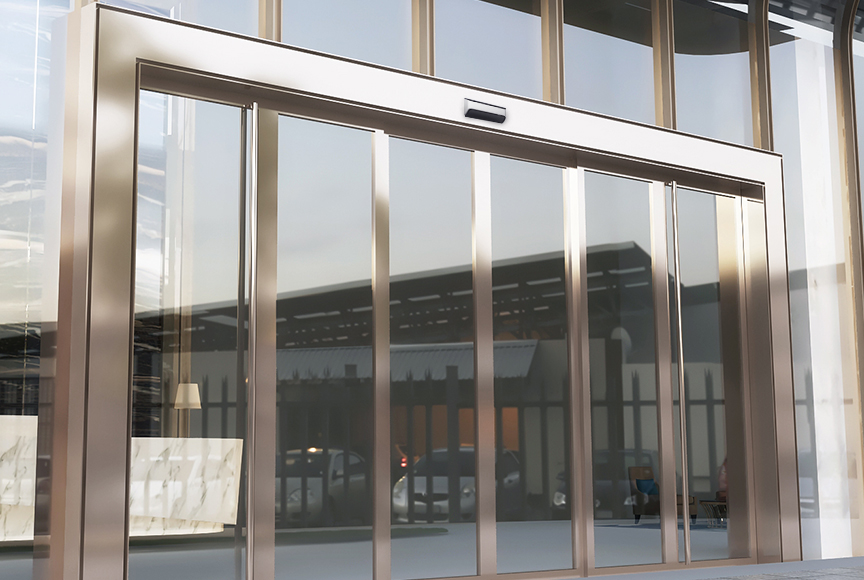How can smart technologies like sensors and IoT be integrated into automatic door systems?
In the era of smart technology, the integration of sensors and the Internet of Things (IoT) has revolutionized various aspects of our daily lives. Automatic door systems, once a symbol of convenience, have evolved to become intelligent gateways, incorporating smart technologies that enhance accessibility, security, and energy efficiency. This article explores how sensors and IoT are seamlessly integrated into automatic door systems, ushering in a new era of smart and responsive entryways.

1. Smart Sensors for Presence Detection:
Smart sensors, such as infrared motion detectors and proximity sensors, play a pivotal role in modern automatic door systems. These sensors can detect the presence of individuals approaching the door, triggering the system to initiate the opening sequence. This feature not only enhances convenience but also contributes to energy conservation by minimizing unnecessary door activations.
2. Touchless Entry Solutions:
In response to health and hygiene concerns, touchless entry solutions have gained prominence. Automatic door systems can be equipped with touchless sensors, leveraging technologies like capacitive touch or infrared sensors. This allows users to open doors without physical contact, promoting a safer and more hygienic environment.
3. IoT Connectivity for Remote Control:
IoT integration enables automatic door systems to be remotely controlled and monitored. Through a secure internet connection, users can manage door operations, monitor real-time status, and receive alerts or notifications. This is particularly valuable for property managers, security personnel, and businesses seeking efficient access control.
4. Data Analytics for Performance Optimization:
Automatic door systems equipped with IoT capabilities generate valuable data regarding usage patterns, peak hours, and system performance. This data can be analyzed to optimize door operations, schedule maintenance proactively, and enhance overall system efficiency.
5. Biometric Authentication for Enhanced Security:
Biometric technologies, such as fingerprint or facial recognition systems, can be seamlessly integrated into automatic doors. This adds an extra layer of security, ensuring that only authorized individuals gain access. Biometric authentication is particularly relevant in high-security environments such as corporate offices or restricted access areas.
6. Adaptive Opening and Closing Speeds:
Smart sensors enable automatic doors to adapt their opening and closing speeds based on real-time conditions. For example, during high-traffic periods, the doors can operate at a faster pace to accommodate the influx of people, while adjusting to a slower speed during less busy times for energy efficiency.
7. Energy-Efficient Operation:
IoT connectivity allows automatic door systems to operate in harmony with building management systems. By analyzing occupancy data and external environmental factors, the system can optimize energy consumption. Doors can be programmed to close during extreme weather conditions or when HVAC systems are in high-demand, contributing to energy efficiency.
8. Integration with Access Control Systems:
Automatic door systems can be seamlessly integrated with access control systems, enhancing security measures. This integration enables coordination with key card readers, security badges, or mobile apps to ensure that only authorized individuals are granted access.
9. Predictive Maintenance for Reliability:
Leveraging IoT, automatic door systems can implement predictive maintenance practices. Sensors monitor the health of components and detect signs of wear or potential issues. This data-driven approach allows for proactive maintenance, reducing downtime and ensuring the reliability of the system.
10. Enhanced User Experience with AI:
Artificial Intelligence (AI) technologies can be integrated to enhance the user experience. AI algorithms can learn and predict user behavior, enabling the automatic door system to anticipate movements and provide a more intuitive and responsive interaction.
Conclusion:
The integration of smart technologies, sensors, and IoT into automatic door systems represents a significant leap forward in terms of functionality, efficiency, and security. From touchless entry solutions to adaptive opening speeds and predictive maintenance, these advancements not only elevate the user experience but also contribute to sustainability and resource optimization. As the synergy between automation and intelligence continues to evolve, automatic door systems are poised to play a central role in the smart buildings of the future.







